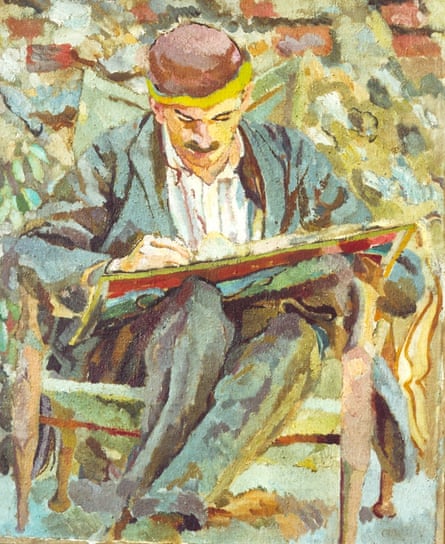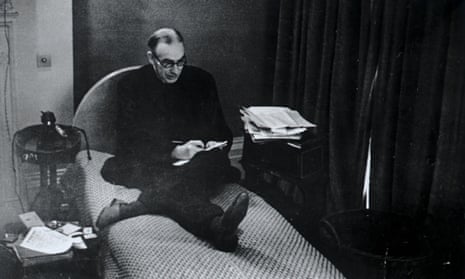1. John Maynard Keynes was the most important economist of the 20th century, but he had only eight weeks’ undergraduate training in the subject and never sat an examination in it. He studied classics and mathematics at King’s College, Cambridge, and missed his King’s friends, their incisive conversation and their beautiful surroundings while working discontentedly as a Whitehall civil servant. No one ever becomes an economist by an uncontrollable impulse. He simply went into the profession in 1908, aged 25, because he was offered a Cambridge lectureship in economics, which gave him the chance of returning to the friends and buildings he loved. Keynes always treated economics as pre-eminently a matter for ethical judgements. For him, prosperity liberated people to make their own choices and helped them to enjoy life. But the love of money for its own sake seemed to him “a somewhat disgusting morbidity, one of those semi-criminal, semi-pathological propensities which one hands over with a kind of shudder to the specialist in mental diseases”. Traditional capitalism “exalted some of the most distasteful human qualities into the position of the highest virtues”. He saw his task as saving capitalism from itself.
2. Keynes would have abominated the nationalism, the philistinism, the bullying and the shallowly held prejudices of Margaret Thatcher. And yet, in one crucial respect, he was a proto-Thatcherite. She notoriously told Woman’s Own magazine, “there is no such thing as society. There are individual men and women, and there are families.” Keynes liked to quote a remark of the 18th-century moral philosopher William Paley: “although we speak of communities as of sentient beings; although we ascribe to them happiness and misery, desires, interests and passions; nothing really exists or feels but individuals.” He believed in the primacy of individual effort, individual self-respect and individual fulfilment. Individualism was the ineradicable core of his economic thinking.
3. Keynes was bisexual. His orientation was towards other men, but at the age of 38 he began a mutually satisfying affair with the ballerina Lydia Lopokova, a dancer with Diaghilev’s Ballets Russes. They married in 1925, when Keynes was 42 – his best man was the painter Duncan Grant, who had been the chief male love of his life. It proved a happy and fulfilling marriage. But the period when he was picking up young men took him to places quite outside the regular Cambridge don’s experience. He spent Christmas of 1910 in the Victoria Commercial Hotel in Ramsgate with a group of pantomime actors (“whose chief characteristic seems to be their extraordinary kindness”, he said) because he was sleeping with one of them. For the same reason, he went to watch Aston Villa play Blackburn Rovers in 1913 – the football stadium reminded him of the Coliseum in Rome (“The crowd maintain a dull roar nearly all the time, rising into a frenzy of excitement and rage when the slightest thing happened”).
4. Keynes was a pioneer of women’s rights to control their own bodies and of gender equality. In 1923, early in his affair with Lopokova, he became vice-president of Marie Stopes Society for Constructive Birth Control. In Moscow, in 1925, Keynes gave a lecture advocating contraception that aroused hilarity in his communist audience. Later that year, he had more success addressing a summer school at Cambridge. The restricted availability of contraceptives, the lack of sex education, marriage and divorce laws that treated women as subordinates, criminal sanctions against homosexuality, job discrimination against women, unequal pay – “in all these matters,” he said, “the existing state of the law and of orthodoxy is still medieval – altogether out of touch with civilised opinion and civilised practices”.

5. Keynes detested “the Goody-Goody Gang”, “the busybodies and spoilsports”, who had converted merry England into a place of proverbial gloom. He believed that the proper aim of work is to provide leisure. A workaholic himself, he wanted other people to enjoy shorter working-hours and longer holidays. In a period of two world wars, he trusted the arts to enlarge people’s hearts and minds, and teach them how to think, feel and live well. During the height of the second world war, Keynes persuaded the treasury to fund the Arts Council of Great Britain, and in 1946, the year of his death, secured a £500,000 grant. With his dying strength, he worked to reopen Covent Garden theatre, which had been turned into a Mecca dance hall, as the Royal Opera House. At the royal gala ceremony he had a heart attack. Afterwards, talking with his family, he wept as he told how the opera house usherettes had donated their rationed clothes coupons to provide fabric for new lampshades for the bracket lights in the auditorium in time for the gala.
6. Keynes was turned into an epithet – “Keynesian” – which has identified him with deficit finance. Keynesian is one of the words used to describe the running of a budget deficit in order to pay for government activities – running schools, hospitals, the armed forces. It is true that in the 1930s, during a period of economic depression and high regional unemployment, he advocated a public works programme of housebuilding and roadbuilding in order to stimulate the national economy by pumping more money round. But he saw such measures as interim devices to meet particular crises and affirmed that budgets should be balanced in ordinary times. As a treasury official in the 1940s, he warned that deficit finance seemed a “rather desperate expedient”. He opposed governments going into debt in order to maintain personal levels of consumption. He thought prodigal spending was habit-forming, and destructive of nations as well as of companies and individuals.
7. Keynes believed in second thoughts. He did not believe in mental standstills. He knew that most of his ideas had only transient value. He wanted to dismantle conventional habits and assumptions, and to rethink previous systems of thought – including his own. He had the courage to treat economics as a matter of time and temper. A generation is usually reckoned as spanning a quarter of a century, but he saw that it took half that time to turn a schoolchild into an adult with attitudes, choices and responses that could not be predicted. Many of the Nazi storm troopers who supported Hitler in 1933 had not been old enough for school when the first world war ended. It takes only a dozen years for new states of mind to prompt new quandaries, expectations and pressures of which political leaders must take account. Keynes was the economist who thought more of generations than of immutable rules.

Comments (…)
Sign in or create your Guardian account to join the discussion